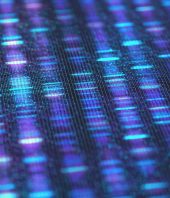In an international study, Mayo Clinic researchers and collaborators have identified genetic markers that may help in identifying individuals who could benefit from the alcoholism treatment drug acamprosate. The findings, published in the journal Translational Psychiatry, show that patients carrying these genetic variants have longer periods of abstinence during the first three months of acamprosate treatment.
Acamprosate is a commonly prescribed drug used to aid patients in recovery from alcoholism. Mayo researchers studied the association between variation in candidate genes and the length of sobriety in alcohol-dependent patients treated with acamprosate in community-based programs. They found that, when other environmental and physiological factors were considered, patients with the common allele of the genetic variant rs2058878 located in the GRIN2B gene, stayed sober more days than those with a variant allele of the same polymorphism. This finding was replicated in a sample of alcohol-dependent patients treated with acamprosate in a study conducted by collaborators from Germany.
"This association finding is a first step towards development of a pharmacogenetic test allowing physicians to choose appropriate treatment for specific subgroups of alcohol-dependent patients," says Victor Karpyak, M.D., Ph.D., Mayo Clinic psychiatrist and lead author of the article. "We believe that individualized treatment selection will eliminate the need for trial-and-error approaches and improve treatment efficacy in patients with alcohol use disorders."
The Mayo findings support evidence implicating an important role of the N-Methyl-D-aspartate (NMDA) receptors in the treatment effects of acamprosate. The researchers say more studies are needed to determine potential importance of identified genetic variants in the longer-term effects of acamprosate, as well as the molecular and physiological mechanisms behind the drug's action.
Mayo Clinic. (2014, November 4). Genetic markers for alcoholism recovery discovered. ScienceDaily. Retrieved November 5, 2014 from www.sciencedaily.com/releases/2014/11/141104131141.htm







